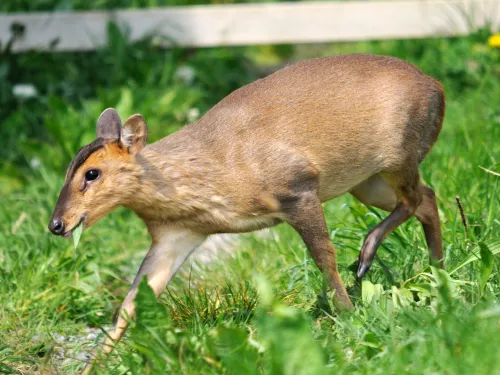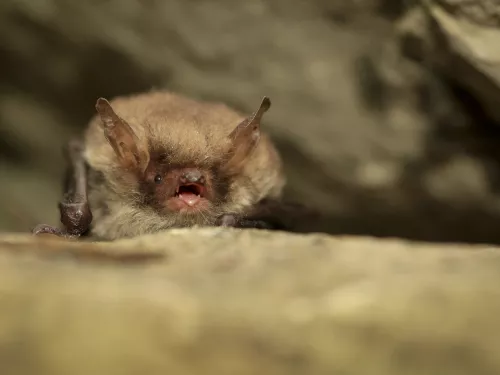Mother Shipton
This striking day-flying moth is named after a 16th century witch.
This striking day-flying moth is named after a 16th century witch.
The Mottled grasshopper can be found in dry grasslands, such as railway cuttings, and heathlands throughout summer. Males can be seen rubbing their legs against their wings to create a 'song' for the females.
Looking a bit like a ragged version of a dandelion, mouse-ear hawkweed has lemon-yellow flower heads that are tinged with red at their outer edges. It likes grassy places with short turf and chalky soils.
You're more likely to see the attractive, brightly coloured caterpillars than the mullein moth itself.

The muntjac deer was introduced into the UK from China in the 20th century. It has gained a stronghold in southeast England, where it can cause damage to our woods through browsing.
The metallic-green Musk beetle lives up to its name: it releases a musky-smelling secretion when it defends itself. It is a longhorn beetle, so has lengthy antennae. Look for it near wetlands in summer.
Musk mallow has pretty pink flowers that can be seen along roadside verges, hedgerows and field margins in summer. It lives up to its name, producing a delicate, musky smell that increases indoors.
A common thistle of roadside verges, rough grassland and waste ground, the Musk thistle has large, purple, nodding flower heads that appear in summer. It is attractive to a wide range of insects.
The Common mussel is a familiar sight on shores all around the UK and is a favourite food of people, seabirds and starfish alike.
One of our most iconic waterbirds, the mute swan is famed for its grace and beauty. It is also considered to be a romantic of the bird world because partners form a perfect love heart with their necks.
With ginger hairs, dark banding and a cream tail, the Narcissus bulb fly looks like a bumble bee, but is harmless to us. This mimicry helps to protect it from predators while it searches for nectar in gardens.

The Natterer's bat can found across the UK, although it is a scarce species. It prefers to forage low down among trees, often taking prey directly from the foliage.